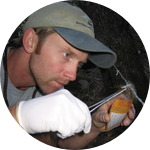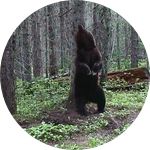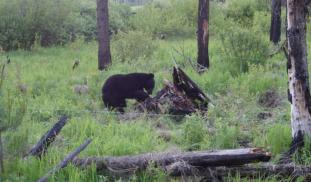Please wait...
About This Project
For over 40 years, state biologists have guided black bear management in Maine using data collected from radio-collared bears. For this study, we will evaluate exciting new techniques for monitoring bears, including the use of remote cameras and DNA analysis of hair. Our goal is to use results from this research to inform bear management, and support a student's goal to attend graduate school.

Browse Other Projects on Experiment
Related Projects
How do polar bears stay healthy on the world's worst diet?
Polar bears survive almost entirely on seal fat. Yet unlike humans who eat high-fat diets, polar bears never...
Uncovering hidden insect diversity associated with a likely undescribed gall-forming midge
Does a likely undescribed species of gall-forming midge (pers. comm. Ray Gagné) on Eriodictyon plants (Yerba...
Macrofungi of the California archipelago
The eight islands of the California Archipelago are a well-studied biodiversity hotspot — but we know almost...





